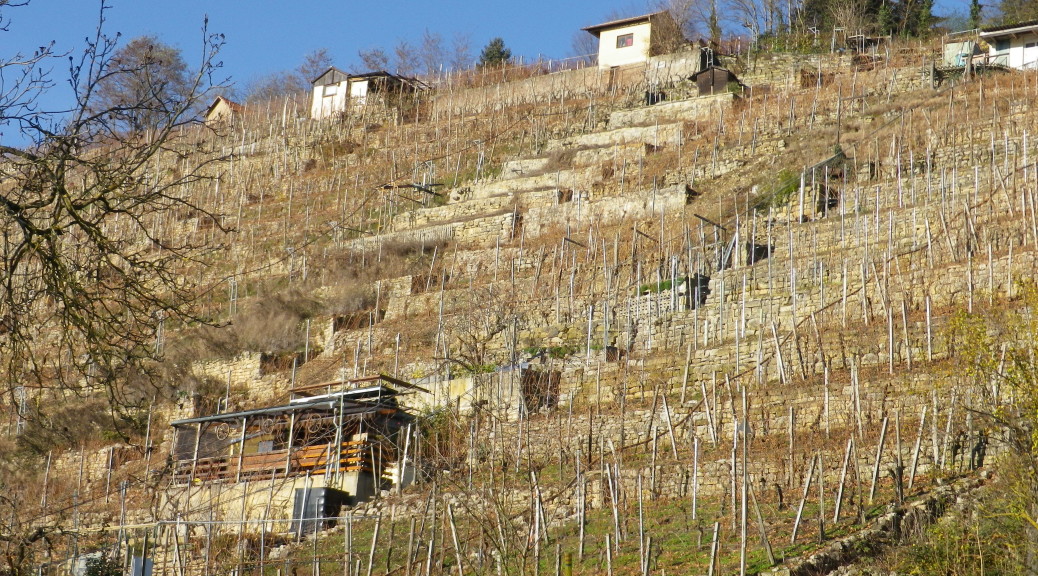What I Learned
Wuerttemberg is a large and diverse wine region. Throughout the region red varietals tend to predominate, especially the Trollinger variety. The Wuerttembergische Weinwanderweg trail through greater Stuttgart essentially covered two of Wuerttemberg’s six wine districts. This post covers the first one, to the north of Stuttgart.
Wuerttembergisch Unterland is the name of the wine district around Marbach and Benningen facing each other on opposite sides of the Neckar. Then Hoheneck (part of Ludwigsburg) and its counterparts on the opposite shore, Neckarweiher and Poppenweiler. The southern-most section of this district continues to around Affalterbach.
Many different varietals are grown in this district, but the predominant and especially noteworthy grape varietals are the red varietals. The three mentioned here, while not unknown, can be difficult to find outside southern Germany. Trollinger grapes, known as Vernatsch in the Suedtirol of northern Italy, is a varietal rarely grown elsewhere in Germany, hence it may be considered “the” product for which this area is known. Trollinger grapes produce a light red wine much favored by people in Wuerttemberg. On the other hand, Acolon grapes come from a (relatively recent) Dornfelder and Blauer Lemberger cross, and result in a much stronger red wine, which is just as delicious in its own way. Finally, there is the Schwarzriesling varietal. This varietal is also known as Pinot Meunier. Elsewhere, the wine from this varietal is often blended in a cuvee to make Champagne. But in Wuerttemberg, it is vinified and drunk as a red wine varietal.
A word of advice: Wines from these three varietals are not at all easy to find outside this region – so try them while you can!
What I Tasted
2014 Kerner, Schnaiter Wartbuehl; Halb-trocken (Semi-dry), Qualtitaetswein; Remstalkellerei (in Weinstadt): A semi-dry white wine with a light gold color; a fruity nose, and taste of peach, honey, a slight citrus taste, and a hint of spice; medium acidity and prickles on the tongue.
2014 Trollinger, Grunbacher Trollinger; Halb-trocken, Qba; Remstalkellerei: A semi-dry white wine with a light red color; a fruity nose, and slight fruity, cherry flavor with a slightly sharp aftertaste.
2012 Riesling, Vom Stein; Trocken, Qualitaetswein; Weingut Michael Maier: A dry white wine with medium gold color; green apple notes, but hints of Riesling grape shine through, somewhat minerally.
2012 Sauvignon Blanc, Spaetlese; Winnender Holzenberg, Weingut Michael Maier: A dry white wine with light gold color; tastes of melon, honey, floral; mild acidity, and nice finish.
